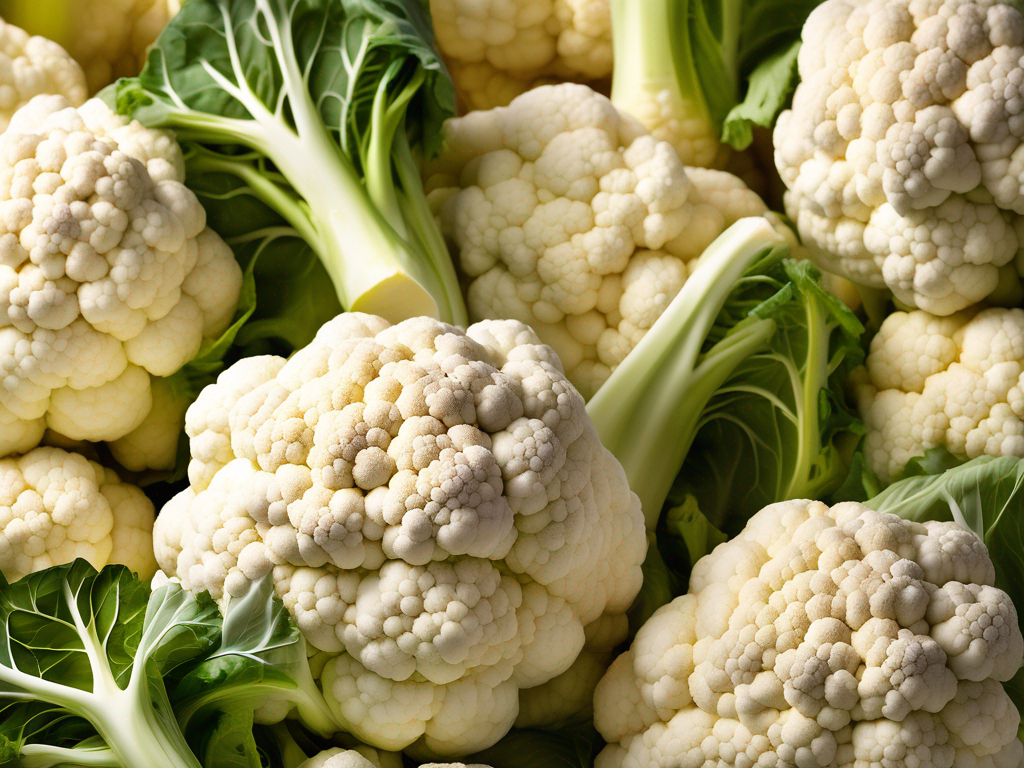
Making the Most of Leftover Cauliflower: Tips for Storage and Usage
Get Your Free Food Safety Cheat Sheet
30 most common foods with instant answers. Print it and stick it on your fridge—completely free!
Making the Most of Leftover Cauliflower: Tips for Storage and Usage
Are you wondering what to do with that extra cauliflower sitting in your fridge? Don't let it go to waste! Cauliflower is a versatile and nutritious vegetable that can be used in a variety of dishes. In this blog post, we will provide you with tips on how to store and use up leftover cauliflower before it spoils. Let's dive in! (Cauliflower)
1. Proper Storage of Cauliflower
When it comes to storing cauliflower, proper storage is key to keeping it fresh for longer. Here are some tips on how to store cauliflower effectively:
Refrigeration:
- Place the cauliflower in a perforated plastic bag or a loosely wrapped plastic bag in the refrigerator's crisper drawer.
- Make sure to remove any outer leaves before storing to prevent moisture buildup.
- Cauliflower can last up to a week when stored properly in the refrigerator.
Freezing:
- If you have more cauliflower than you can use within a week, consider freezing it.
- Blanch the cauliflower by boiling it for a few minutes and then plunging it into ice water to stop the cooking process.
- Pat the cauliflower dry, place it in a freezer-safe bag, and store it in the freezer for up to 6 months.
2. Creative Ways to Use Leftover Cauliflower
Now that you have stored your cauliflower properly, it's time to get creative in the kitchen! Here are some delicious ways to use up leftover cauliflower:
Roasted Cauliflower:
- Toss cauliflower florets with olive oil, salt, and your favorite spices.
- Roast in the oven until golden brown and crispy.
- Enjoy as a side dish or add to salads and bowls.
Cauliflower Rice:
- Grate or pulse cauliflower in a food processor to create cauliflower rice.
- Use cauliflower rice as a low-carb alternative in stir-fries, fried rice, or as a base for grain bowls.
Cauliflower Soup:
- Cook cauliflower with onions, garlic, and vegetable broth until tender.
- Blend until smooth to create a creamy cauliflower soup.
- Garnish with herbs, croutons, or a drizzle of olive oil.
Cauliflower Mash:
- Boil or steam cauliflower until soft.
- Mash the cauliflower with butter, milk, salt, and pepper to create a creamy mashed cauliflower.
- Serve as a healthier alternative to traditional mashed potatoes.
Cauliflower Buffalo Bites:
- Coat cauliflower florets in a mixture of buffalo sauce and breadcrumbs.
- Bake until crispy and golden brown.
- Serve as a delicious and healthier alternative to buffalo chicken wings.
3. Food Safety Tips for Using Cauliflower
When using leftover cauliflower, it's essential to follow proper food safety practices to prevent foodborne illnesses. Here are some food safety tips for using cauliflower:
Wash Thoroughly:
- Before cooking or consuming cauliflower, wash it thoroughly under running water to remove any dirt or contaminants.
Cook Thoroughly:
- Ensure that cauliflower is cooked thoroughly to kill any harmful bacteria.
- Use a food thermometer to check that cauliflower dishes reach the recommended internal temperature.
Store Properly:
- Store cooked cauliflower in a shallow container in the refrigerator within two hours of cooking.
- Consume leftovers within 3-4 days to ensure freshness and safety.
4. Cauliflower Storage FAQs
How long can you keep cooked cauliflower in the refrigerator?
Cooked cauliflower can be stored in the refrigerator for 3-4 days. Make sure to store it in airtight containers to maintain freshness.
Can you freeze cooked cauliflower dishes?
Yes, you can freeze cooked cauliflower dishes like soups or casseroles. Make sure to cool the dishes completely before transferring them to freezer-safe containers.
How can you tell if cauliflower has gone bad?
Discard cauliflower if you notice mold, discoloration, or a foul smell. Fresh cauliflower should have a crisp texture and a clean, cauliflower-like aroma.
Conclusion
Leftover cauliflower doesn't have to end up in the trash! By following proper storage techniques and getting creative in the kitchen, you can make the most of this nutritious vegetable. Whether you roast it, rice it, or turn it into a creamy soup, there are endless possibilities for using up leftover cauliflower. Remember to prioritize food safety when handling cauliflower to ensure a safe and enjoyable dining experience.
Don't let your cauliflower go to waste—try out these tips and recipes to make the most of this versatile vegetable! For more information on cauliflower and other food storage tips, visit here. (Cauliflower)
Related Posts
Here are some other articles you might find helpful:
Authoritative Food Safety References
These agencies and university labs inform every tip and health precaution we publish.
USDA FoodKeeper – Cold Storage Guidelines
Official refrigerator, freezer, and pantry timelines maintained by the U.S. Department of Agriculture.
Visit USDA FoodKeeperFDA Produce Safety Rule & Grower Guidance
Field-to-fridge handling practices that prevent contamination of fruits, vegetables, and leafy greens.
Visit FDA Produce SafetyCDC Foodborne Illness Prevention Hub
Surveillance-backed guidance on pathogens, symptoms, and steps to reduce foodborne illness risk.
Visit CDC Food SafetyUC Davis Postharvest Technology Center
University research detailing optimal storage atmospheres for produce after harvest.
Visit UC Davis PostharvestPenn State Extension – Home Food Preservation & Safety
Peer-reviewed extension bulletins on safe canning, chilling, and reheating practices.
Visit Penn State ExtensionGet Your Free Food Safety Cheat Sheet
30 most common foods with instant answers. Print it and stick it on your fridge—completely free! Want more? Upgrade to the complete guide with 70+ foods.
Scan your food directly and get instant safety info using our AI-powered camera feature.